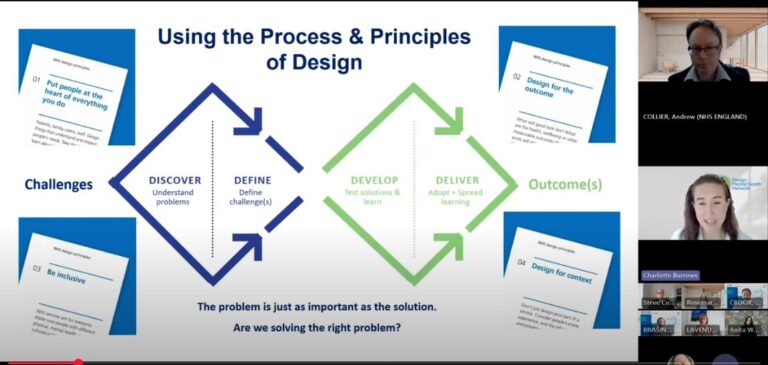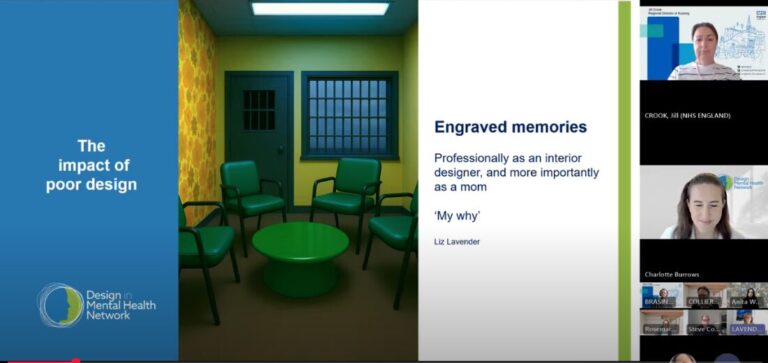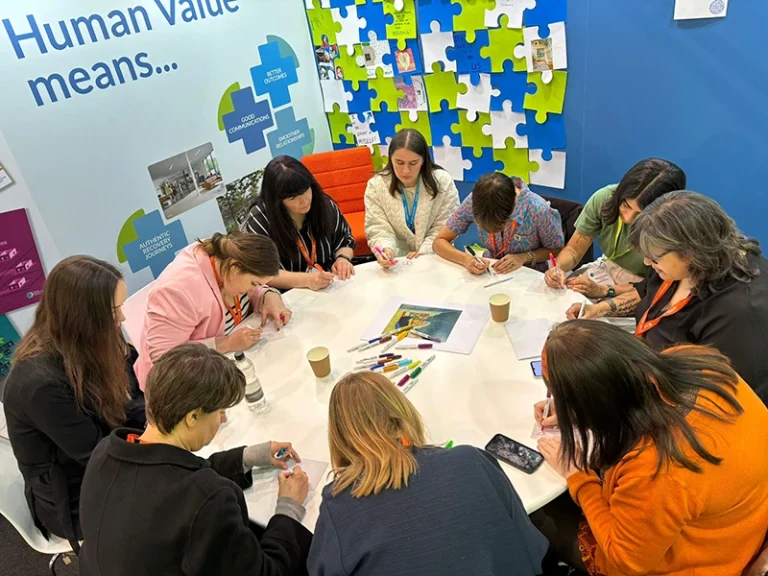Sensory-Informed Design in Practice – The Brook Webinar Reflections
Webinar Reflections – 1 October 2025
On 1 October 2025, the Design in Mental Health Network, in partnership with NHS England South West and Devon Partnership NHS Trust, hosted a live webinar exploring The Brook, a newly completed inpatient unit shaped by sensory-informed design.
Over 300 people joined us from across the NHS staff, estates, architecture, design, occupational therapy, clinical services and lived experience communities. Together, we reflected on how sensory-informed choices such as lighting, acoustics, colour, layout, and materials can transform the therapeutic impact of mental health environments.

What We Learned
Strategic Planning
Andrew Collier (NHSE SW) set out how strategic decisions shaped The Brook, from CQC-compliant site selection to ensuring access to community, transport, and safe outdoor spaces. Despite capital and planning challenges, the project at Langdon Hospital was delivered in accordance with the principles of therapeutic design and long-term sustainability.
Key lessons included:
- Prioritising access to nature and community links
- Designing private flatlets with gardens and quiet zones
- Balancing operational demands with calming, homely interiors

Resources from the Event:
Co-Production in Action
Architect Rosemary Jenssen emphasised how “nothing about me without me” shaped the process. Co-production was not tokenistic but embedded at every stage, through:
- Shadow days and joint visits
- “Day in the life” exercises
- Clinical review groups
This collaboration between estates teams, clinicians, designers, commissioners, and experts by experience ensured the Brook reflects the real needs of those who will use it.

Sensory-Informed Environments
Occupational Therapists Rachael Daniels and Danielle Morgan highlighted how environments directly influence emotional safety and recovery. Sensory-informed design at The Brook helps to:
- Reduce anxiety and distress
- Prevent overload and escalation
- Support self-regulation and autonomy
- Affirm neurodiversity and strengths
Interior designers Liz Lavender and Steve Coombe, alongside architect Anita White, demonstrated how every design choice matters. Natural colours, circadian lighting, domestic furnishings, and carefully considered acoustics work together to create a therapeutic atmosphere.
Their message was clear: design decisions are never neutral—they directly shape how people feel, behave and heal.

“Feeling safe is a fundamental part of recovery,”
says Liz Lavender, Expert by Experience and Co-Founder of The Environmental Hub, who worked on The Brook.
‘Environments are never neutral’ says Liz.
‘Sensory-informed design is not about spending more, but about choosing differently. When lived, clinical and design expertise come together, we can create environments that foster dignity, safety and wellbeing for both patients and staff. Good design supports access to healthcare.”
Launch of the Environmental Hub
The session highlighted the Environmental Hub, a shared space for evidence, tools, and case studies to support therapeutic design in mental health settings.
We welcome contributions from members and partners to grow this collective resource.
CEO Reflection
Charlotte Burrows, CEO of the Design in Mental Health Network, reflected:
“This session was about practical, implementable change. The Brook shows how, when lived, clinical and design expertise come together, we can create environments that genuinely foster dignity, safety and wellbeing. The learning we take forward is that sensory-informed design is not about spending more, it’s about choosing differently.”
Looking Ahead
This was the first in a new series of DiMHN webinars focusing on practical applications of therapeutic design. Future sessions will continue to spotlight projects and research that show how evidence-led design can change lives.
Stay updated:
- Subscribe to our regular newsletter at the bottom of this page for Design in Mental Health and other industry helpful updates.
- Contribute your reflections and case studies through the Environmental Hub.
- Contact us if you would like to collaborate or contribute to a future webinar >
Join us in shaping the future of mental health environments through good design.



